Your cart is currently empty!
Mouse IL-5 ELISA Kit
Mouse Interleukin 5 (IL-5) ELISA KitFor the quantitative determination of mouse interleukin 5 (IL-5) concentrations in mouse serum, cell culture supernatant, and other biological fluids
Description
|
RACTIVITY |
Mouse |
|
SENSITIVITY |
<0.8 pg/mL |
|
ASSAY RANGE |
3.125-200 pg/mL |
|
REAGENTS PROVIDED |
MOUSE IL-5 MICROTITER PLATE |
INTENDED USE
This Mouse IL-5 ELISA kit is to be used for the in vitro quantitative determination of mouse interleukin 5 (IL-5) concentrations in serum, cell culture supernatant, and other biological fluids. This kit is intended for LABORATORY RESEARCH USE ONLY.
INTRODUCTION
Mouse IL-5 is a heamotapoietic cytokine, mainly produced by T-helper 2 cells and mast cells. The cytokine is comprised of two identical 113 amino acid units linked by disulfide bond. The gene for mouse IL-5 is located at chromosome 11 in conjunction with genes for IL4 and other T-helper 2 cytokines such as IL-13, GM-CSF, IL-3. IL-5 regulates B cell proliferation, eosinophil maturation and activation. IL-5 receptor is a heterodimer with a cytokine specific alpha unit, and a signal transduction beta subunit that is identical to the beta subunit of receptors for IL-3 and GM-CSF. IL-5 receptor alpha (IL-5Ra) is expressed by eosinophils, B cells and basophils in member-bound form and soluble form. While the membrane bound form participates in the activation of eosinophils and B cells, the soluble form of IL-5Ra has an antagonist effect to IL-5. Increased IL-5 expression causes chronic IgE response and hypereosinophilic syndromes. Elevated IL-5 level is found in allergic diseases such as allergic rhinitis, asthma and allergic conjunctivitis.
This ELISA kit provides a tool for studying IL-5 expression and regulation in animal model.
PRINCIPLE OF THE ASSAY
This mouse IL-5 enzyme-linked immunosorbent assay (ELISA) applies a technique called a quantitative sandwich immunoassay. The microtiter plate provided in this kit has been pre-coated with a monoclonal antibody specific for mouse IL-5. When standards or samples are added to the appropriate microtiter plate wells, mouse IL-5 in the standards or samples will be immobilized by the precoated antibody during incubation. Then, a biotin-conjugated antibody preparation specific for mouse IL-5 is added to each well and incubated. The biotin labelled antibody attaches to the wells by binding to mouse IL-5. After plate washing, other proteins, components and unattached biotin labelled antibody is removed. After that, avidin-horseradish peroxidase (HRP) conjugate is added to each well. Avidin has a very high affinity for biotin, thus, it links the tracer (HRP) sturdily to the biotin labelled antibody. The wells are thoroughly washed to remove all unbound avidin-HRPconjugate and aTMB(3,3’, 5,5′ tetramethyl-benzidine) substrate solution is added to each well. The enzyme (HRP) and substrate are allowed to react over a short incubation period. Only wells that contain mouse IL-5 will exhibit a change in colour. The extent of colour change is proportional to the quantity of mouse IL-5 present in the standards/samples. The enzyme-substrate reaction is terminated by the addition of a sulphuric acid solution and the colour change is measured spectrophotometrically at a wave length of 450 nm ± 2 nm.
In order to measure the concentration of mouse IL-5 in the samples, this kit contains two calibration diluents (Calibrator Diluent I for serum/plasma testing and Calibrator Diluent II for cell culture supernatant testing). According to the testing system, the provided standard is diluted (2-fold) with the appropriate Calibrator Diluent and assayed at the same time as the samples. This allows the operator to produce a standard curve of Optical Density (O.D.) versus IL-5 concentration (pg/mL). The concentration of mouse IL-5 in the samples is then determined by comparing the O.D. of the samples to the standard curve.
This mouse IL-5 ELISA is a 3.5-hour solid-phase immunoassay readily applicable to measure mouse IL-5 levels in serum, cell culture supernatant, and other biological fluids in the range of 0 to 200pg/mL.

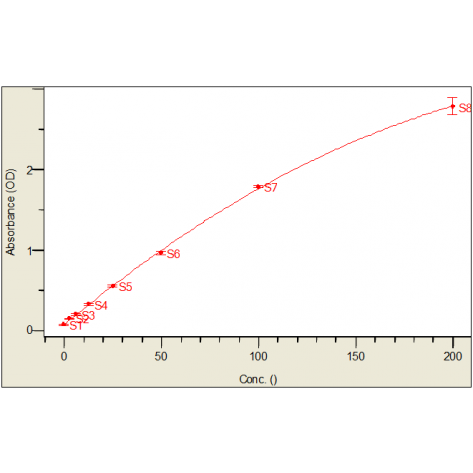
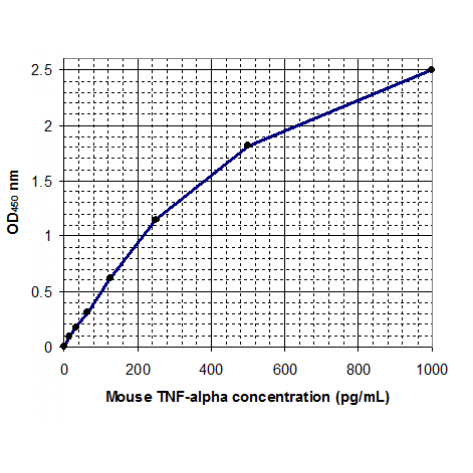
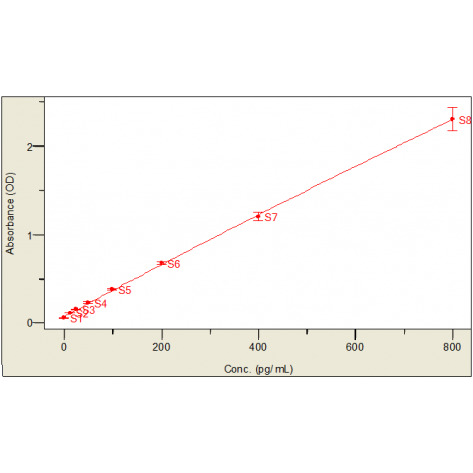
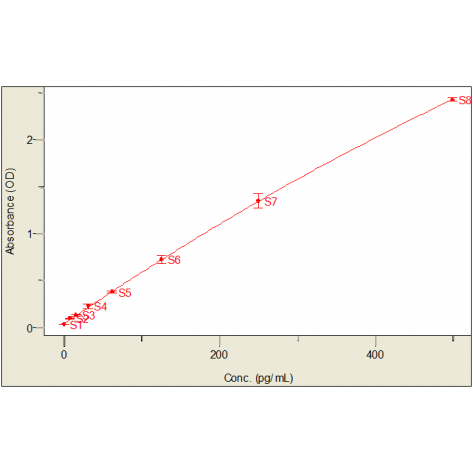
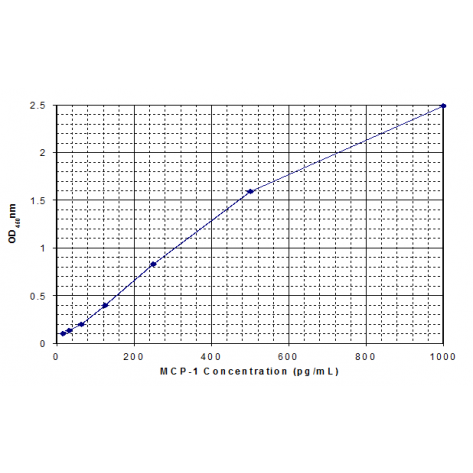
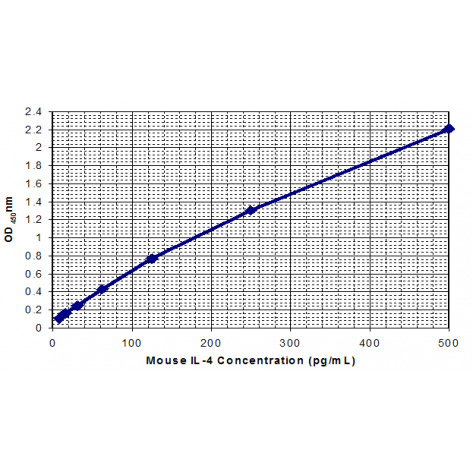
Reviews
There are no reviews yet.